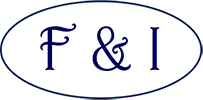Report from F&I Webinar – “Biomechanics of Horse and Rider from a Coaching Perspective” delivered by Dr Russell Mackechnie-Guire
Ruth Baxter kindly organised the Webinar on the
“Biomechanics of Horse and Rider from a Coaching Perspective” delivered by Dr Russell Mackechnie-Guire on 4th Nov 2020.
After a few anxious moments linking up to the Webinar which Ruth planned so well we were treated to a most wonderful 2 hours of research that is ground breaking to say the least!
I sat riveted to my chair listening to and watching a fantastic revelation of knowledge that will benefit horse and rider for many years.
Russell told us that his research is applicable to:
1. Improve the welfare of the ridden horse.
2. Improve the health of the ridden horse.
3. Improve the performance of the ridden horse.
Coaches have a huge responsibility to absorb the ongoing research and apply it in a practical manner for the ridden horse.
He introduced us to research on:
1. Girth Fit.
2. Saddle Panel design.
3. Bridle Fit and Design.
Girth Fit.
Girth fit research began in 2009 leading up to the London Olympics. It was to help riders get the very best performance possible from the Team GB Dressage horses at the Olympics. Every last detail will gain the edge over the other teams and gather every vital mark to win. Win they did!
By using pressure pads it was established that a lot of pressure was applied behind the elbow area but less in the Sternum. Once a modified, anatomical girth was designed to relieve this pressure it was clear that the horses displayed more hock flexion and more extension in front. There was equal action on both sides. This research was further used on Jumping Elite horses at 1.40m, Racehorses and Eventers at gallop.
Russell explained that the modified girth allowed better use of Abdominal muscles by reducing pressure and allowing better absorption of ground force. There is a better Range of Movement and ground cover in the length of stride.
He is not a big advocate of elasticated girths as they can be too tight. He advised to have girth buckles high up and if using training aids it is advisable to attach to a ring on the girth and not round the girth to reduce sternum pressure.
Saddle Panel Design.
A saddle that is too narrow in the waist/twist of the saddle over T10 to T13 area of the spine will cause pressure on the spine. Riders like a narrow waist as their hips lack suppleness. More research has taken place with saddle fit. Again a modified saddle reduces pressure. If a horse has pressure applied over this area of the spine it will develop a locomotary strategy to cope that does not allow the horse step through. This does not enhance welfare or performance. This applies to Jumping and racing saddles too.
With a modified saddle the stride length is increased. He discussed saddle slip/roll. A horse becomes straighter once the saddle is corrected and the rider balance is improved.
Bridle Fit and Design.
We as coaches must consider head conformation when fitting the bridle. The bridle must be considered as a whole unit not just the noseband. A wide head piece, a buckle over the head piece, brow band or rolled leather will cause extra pressure and involve the TMJ.
The TMJ has an influence over hind limb movement.
A crank noseband with rings has a more even pressure than a traditional structure of cavesson noseband.
Bits have a huge influence and very often the horse moves the tongue to protect the roof of the mouth, hence drawing back of the tongue.
There is clearly much more research to be done in this area.
Rider Effect and Symmetry.
The horse likes stability in order to move freely and with confidence. If the rider is crooked the balance is upset by so many times the weight of the rider depending on the gait and will be more unbalanced in canter than in walk. The rider instability can be caused by a physiological issue or slippage of the saddle in most cases. However we must be aware that the horse may be just lame.
The great mantra throughout the presentation was:
“Have you had this saddle checked by a professional saddle fitter and if so when?” Some horses may have to have this done monthly.
We, as coaches, have a responsibility to notice girth, saddle and bridle fit. It is our duty then to make sure the rider gets the girth, saddle or bridle correctly fitted to help to rectify any asymmetry in the horse’s way of going.
By doing this as coaches, we will help improve the welfare, performance and longevity of the working life of the ridden horse.
Thank you Russell and Ruth!
Faith Ponsonby 7th Nov 2020.
